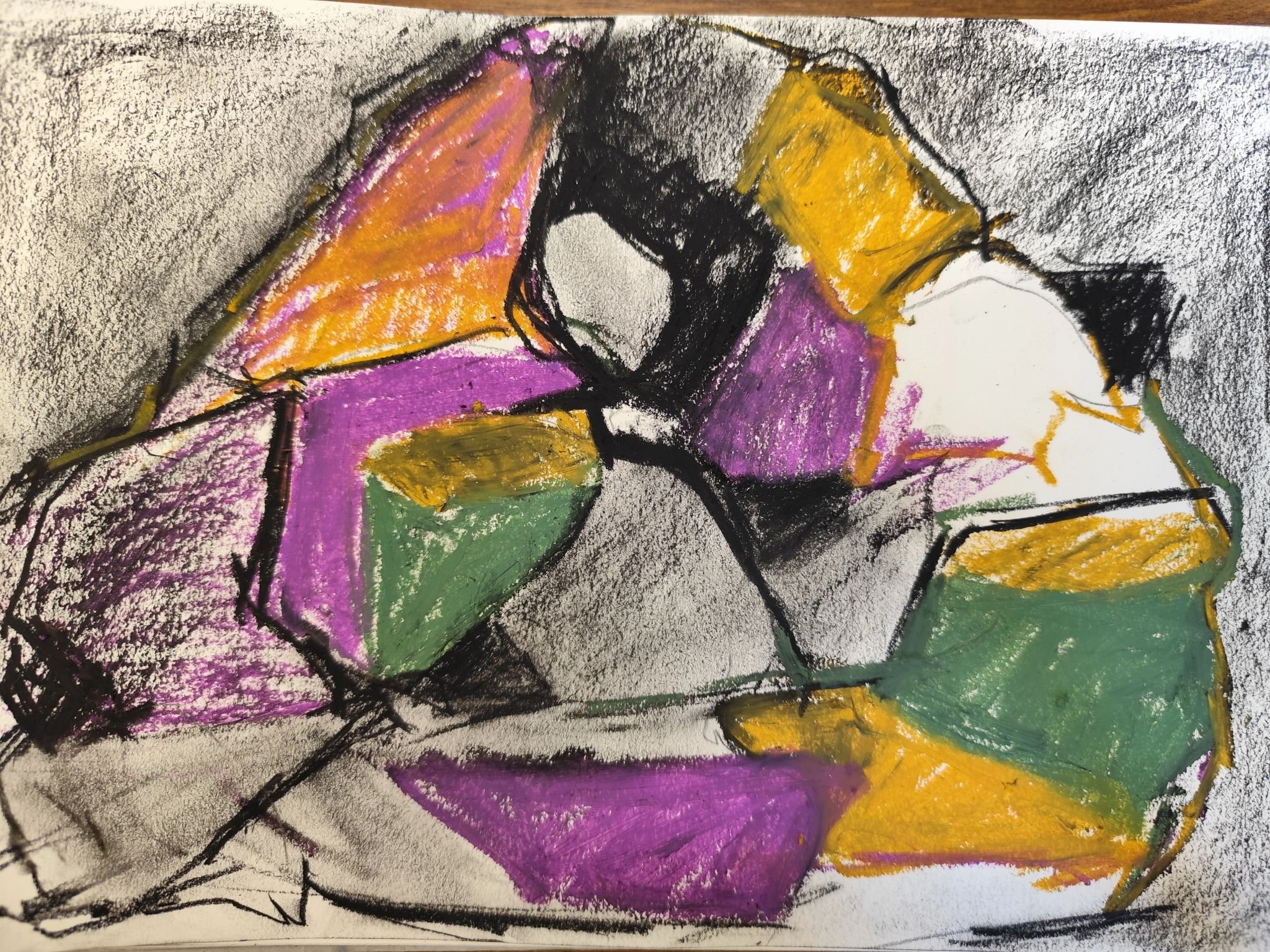From Curiosity to Insight: Discovering the Art of Rock Appreciation
Sketch by Virginia Kostmayer, first-year MFA.
In my Mediterranean Seminar, part of the ACM-IAU School of Art Mediterranean Core Art Program, we recently had the pleasure of participating in a workshop on the tradition of Chinese rock appreciation. The session explored how this ancient practice continues to inspire contemporary artists in both the East and the West.
The workshop was presented by art collector and specialist, Joseph Roussel and his wife Jana Roussel. Joseph Roussel is the director and group lead of Village Reach which works to bring private sector experiences and resources to Sub-Saharan Africa, but Chinese rocks and history are a part of his passion as he volunteers at Musée Guimet, the National Museum of Asian Arts. I have to say that my initial impression of the subject was pure curiosity that there was some tradition on meditating and appreciating rocks. To say I was pleasantly surprised would be an understatement, Roussel gave me an entirely new perspective and insight into a tradition I knew nothing about.
The tradition of rock appreciation has been traced back to the Imperial Court in China. From there the tradition spread to Japan and Buddhists began to integrate the appreciation of rocks into their practices. But how exactly does one appreciate a rock?
Rocks have many different purposes in art. They were used as key pieces within garden arrangements, placed on podiums as public statues, used as ink stones or scholars’ rocks, and as ornaments within a home. I personally found the scholars’ rocks to be the most fascinating. Scholars in China were civil servants and at the time they were some of the most educated people in their communities. They found value in rocks that would make them reflect on their place within the environment, appreciating rocks that looked like small landscapes, mountains, canyons, etc. This form of perspective gave them the chance to think about how large the world truly is, that they themselves were minuscule by comparison. These thought experiments made their daily tasks and problems feel less significant upon reflecting on the size of the world and to me it sounded very grounding.
Roussel actually brought in quite a few rocks that we had the chance to think on and describe. The rocks themselves came in such variety of colors, shapes, and textures. But maybe best of all is that they all had lovely custom-made wooden stands that I thought were an integral part to their beauty.
The final part of our workshop considered the question "are rocks art?" and challenged us to create an artwork based on one rock. Some people went for realism, others dove into colors and expression, the rock was taken in so many different ways which just goes to show its versatility. Now I am on the hunt for a scholars’ rock of my own.




